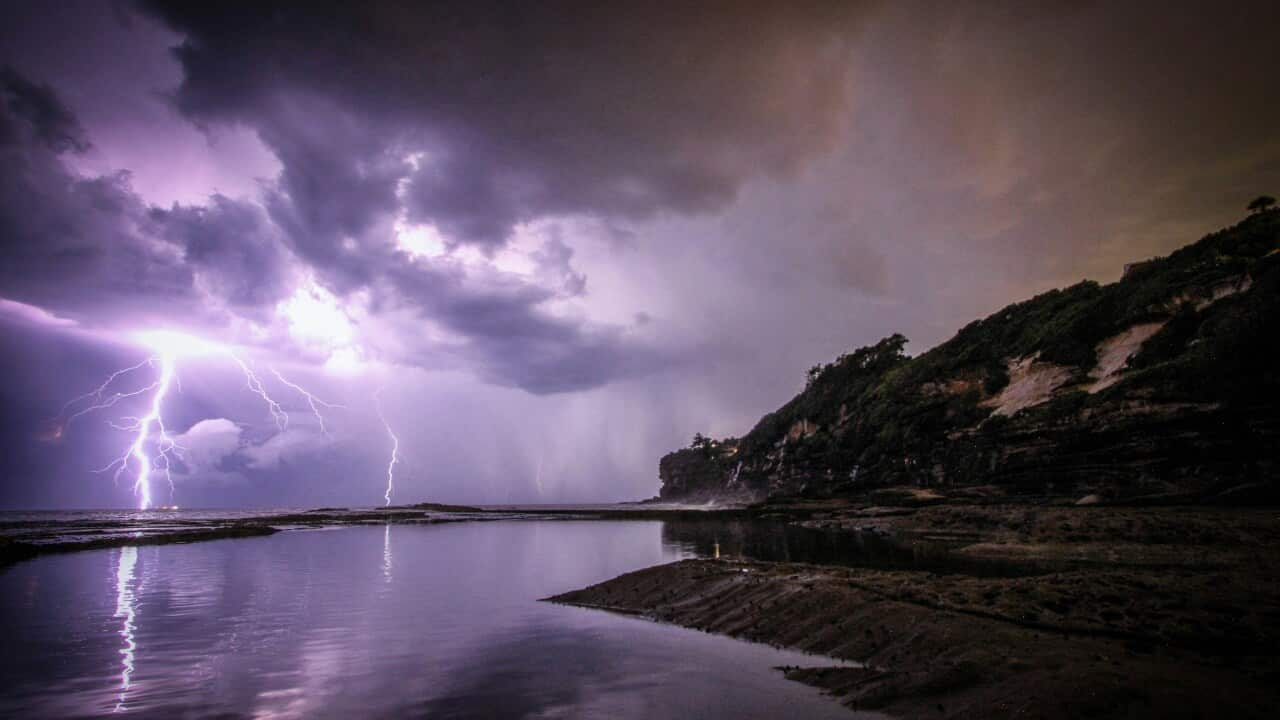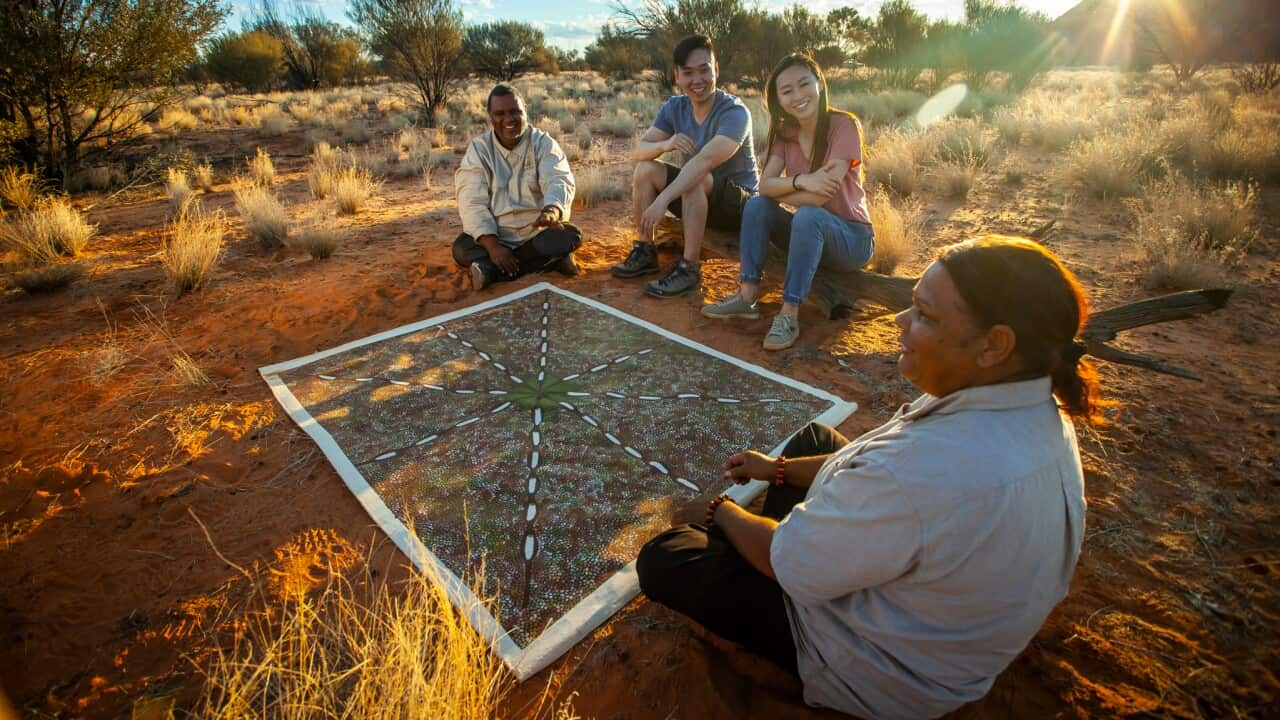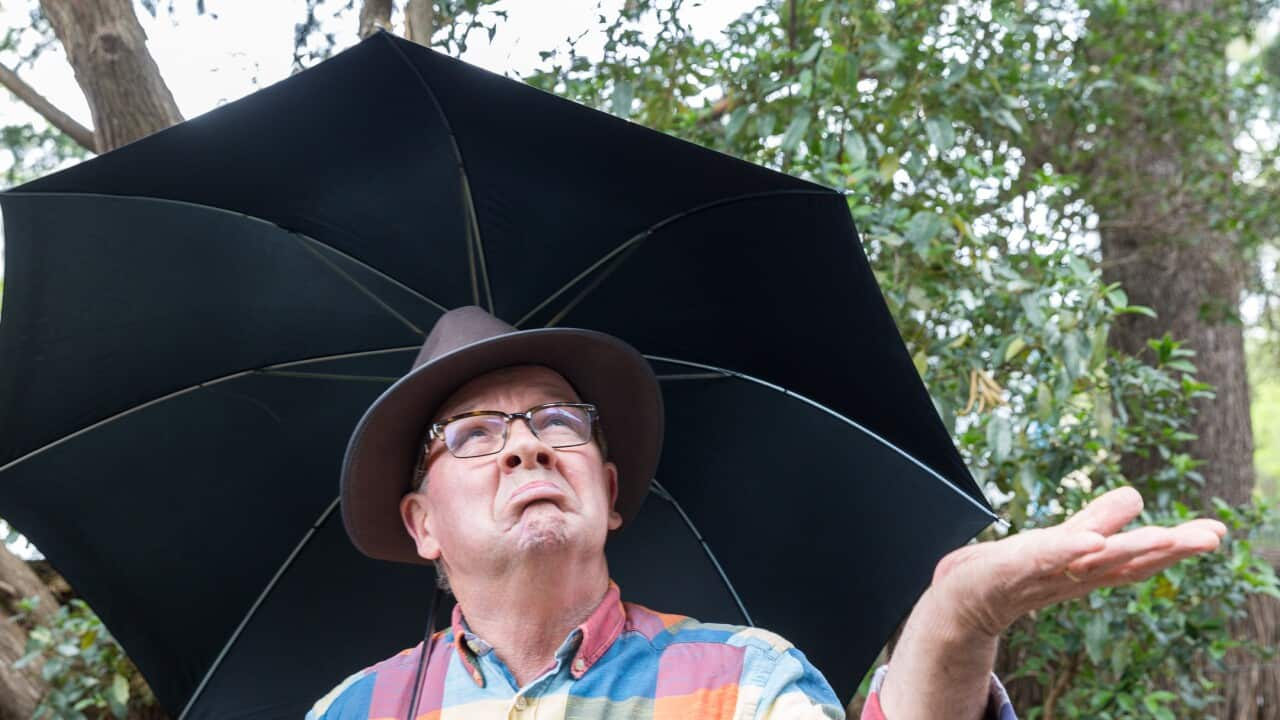Key Points
- First Nations knowledge of weather and seasons has been passed down through the generations through oral and visual storytelling and cultural traditions.
- The seasonal cycles described by First Nations peoples vary across Australia according to their geographic location.
- First Nations weather knowledge incorporates understanding of how changes in the behaviour of animals or growth of plants ties in with changes to weather and seasons.
Understanding the weather and its seasons is a profound aspect of Aboriginal and Torres Strait Islander cultural knowledge, developed over tens of thousands of years.
The weather influences the life cycles of animals and plants, and understanding this interconnection is vital for human survival—especially in Australia with its seasonal weather extremes and often unforgiving landscape.
All things are connected, is a central philosophy of First Nations culture, and over millennia, Australia’s Aboriginal and Torres Strait Islander people have observed their environment and learned the often-subtle connections between climate, weather, seasons and changes to the animal and plant life around them.
The call of a particular bird might indicate oncoming rain, and the flowering of a certain plant or tree might indicate the changing of a season and the time to move to a different part of the land.
Aunty Joanne Selfe is a Gadigal woman from the eastern edge of Australia who grew up learning about the weather, seasons and environment from information passed down through her family and community.
“Intricate understandings of weather systems, seasons and the environment, is important for the survival of all people. For First Nation’s people, our deep connections to this knowledge allowed us to flourish in this fragile environment,” Aunty Joanne explains.

Moodjar, the native Christmas tree Credit: TerriAnneAllen/Pixabay
“There are many weather events that affect this fragile continent of ours, whether it's thunderstorms or drought, First Nations people have prepared for them and they have knowledge systems that allow survival through cyclones, or understanding safety in a thunderstorm, preparing for drought,” Aunty Joanne says.
“When we look at the way that weather can affect all humans, we often want to have control - our knowledge is what keeps us safe. Diarra-murrahmah-coing, the sun is setting red, and that means it'll be good weather tomorrow.”
On the western side of Australia, Murdoch University Indigenous Knowledge academic Jordan Ah Chee was born in the Kimberley region and has connections to Bindjareb, Wardandi, Palyku, Nyikina, and Yawuru peoples.
“There's this notion that our people were nomadic, but that kind of leans toward us not having a place or not having a home."
We very much move with the seasons and we would move from place to place in a sustainable way.Jordan Ah Chee
“Aboriginal and Torres Strait Islander people have fostered a deep connection throughout the millennia, with the lands, the waters and the sky – and through this connection we've developed this intricate knowledge that has helped us to thrive in this place – and it’s this underlying notion of that everything is connected.”
First Nations people’s deep connection to the land, sky and waters instils an intense understanding of how the changing seasons are reflected in the landscape.
“So unlike western ways of knowing where you tie the seasons to specific dates within the calendar, knowledge of when the seasons are coming and how they flow throughout the year, came through changes in the landscape and changes in animal behaviour and changes to the environment,” Ah Chee says.
“And that would dictate where we would be at certain times of the year, what food was available, whether we would be on the coast or inland, so definitely an understanding of the weather and seasons was very important to our way of life.”

Fire stick farming Credit: Christian Bass/Unsplash
“When we think of this probably the first thing to come to mind is fire stick farming. Fire stick farming allows us to keep the fuel load low on the ground so that should a fire start from lightning or other events, that the fuel loads not too high,” Aunty Joanne explains.
“But it also allows us to ensure that fresh green shoots are there ready for those species of mammal that really like them.”
The seasonal cycles described by First Nations peoples vary according to their geographic location across Australia.
In Noongar country of south-west Western Australia, six seasons are recognised through the calendar year, with Birak signalling the start of summer from early December – a time of hot weather and celebration.
“Birak is related to heat and the sun and fire, it's when it's getting hotter and it's usually known as the season of the young, and is a time of celebration, and this season was marked by snakes and reptiles shedding their skins, chicks leaving the nest and young animals transitioning into adulthood and making their way out into the world,” Ah Chee explains.
“One significant change in the landscape is these beautiful orange yellow flowers of the moodjar, or the Christmas tree, which is a very spiritually significant tree for the Noongar people. And around this time, depending on the weather and climate, was when cultural burning would occur.”
Celestial objects such as the moon and its cycle, are used by First Nations people to recognise impending weather changes.
In First Nation's knowledge systems moon halos depict the onset of rain.Aunty Joanne Selfe
“Now to think about it – ice crystals are suspended in the upper atmosphere, moonlight is refracted and reflected by the ice crystals, and it can result in the appearance of a halo around the moon. Now even contemporary science recognizes that moon halos often proceed a low-pressure system, frequently followed by rain and cooler temperatures or within the next day or two.”
And subtle changes to the position of the moon can also have significant meaning.
“Sometimes the moon isn’t in the centre of that halo, it might be to one side a little bit, and that would indicate that there's some wind coming as well,” Aunty Joanne says.

A moon halo Credit: Geoffrey Wyatt
“We have some petroglyphs in Sydney, quite a few to be honest, but one of them that stands out is called Moon Rock, it’s got engravings of the moon. Now these specific engravings show the eight phases of the moon, and they begin with the creator Biaime's boomerang,” Aunty Joanne shares.
“Now this is important because the Gaddy are known as great fishes, our women were always out at Warrang, Sydney Harbor, on their nowies, fishing with a small fire and often children in tow, so when we use the moon to fish we know that the first and last quarter of the moon is probably the best time to be fishing, and the reason for this, is that a new or full moon will stir up the tides – they'll be a little bit stronger, they'll move that sediment on the sea floor and also make it a little bit harder to see the fish.”
Australia’s climate is incredibly diverse, spanning tropical monsoons, desert heat, and alpine cold—each region with its own unique rhythms.
For Indigenous communities, the seasons are not defined by dates but by how plants and animals respond to their environment. This perspective offers a richer, more nuanced understanding of Australia’s climate than the familiar four-season model.
It’s a powerful reminder of the deep connection Indigenous cultures have with the land and how much we can learn by appreciating their knowledge and traditions.
For further information about Indigenous weather knowledge, visit:
Subscribe or follow the Australia Explained podcast for more valuable information and tips about settling into your new life in Australia.







